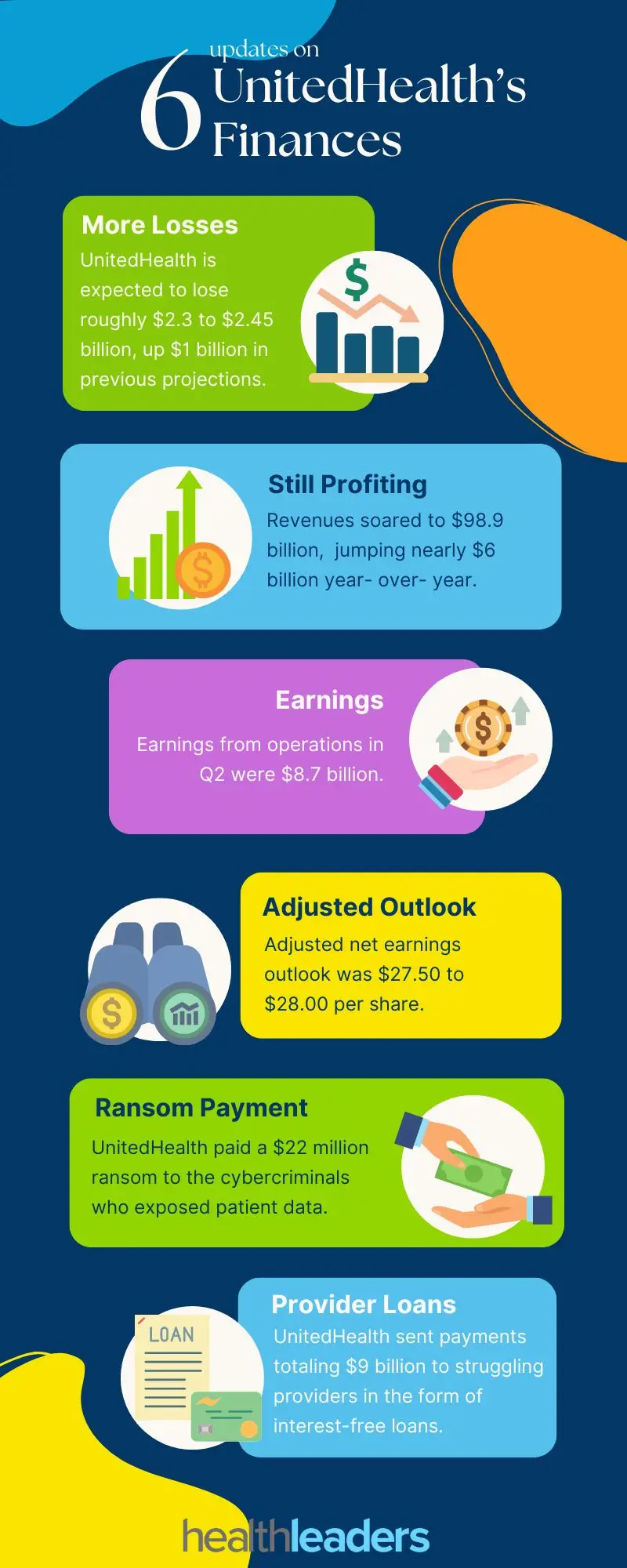UnitedHealth, a major player in the healthcare industry, has experienced significant financial changes recently. These developments reflect the complexities of managing a large healthcare enterprise in an evolving economic and technological landscape. Here are six key updates on UnitedHealth’s finances:

Increased Loss Projections
UnitedHealth is facing higher-than-expected losses, with current estimates indicating a loss of approximately $2.3 to $2.45 billion. This represents an increase of $1 billion compared to earlier projections. The revision in loss estimates may be due to several factors, including rising healthcare costs, challenges in managing claims, or unexpected expenses related to operational adjustments.
Revenue Growth Despite Challenges
Despite the projected losses, UnitedHealth has seen substantial revenue growth. The company’s revenues surged to $98.9 billion, a near $6 billion increase compared to the previous year. This growth demonstrates the company’s ability to generate significant income even in a challenging financial environment. The increase may be attributed to expansion in service offerings, new partnerships, or effective cost management strategies.
Strong Earnings from Operations
UnitedHealth reported solid earnings from its operations, totaling $8.7 billion in the second quarter. This figure highlights the underlying strength of the company’s core business activities. Operational earnings are a critical metric for assessing the profitability and efficiency of the company’s day-to-day operations, reflecting its ability to generate income through effective management of its services and resources.
Adjusted Earnings Outlook
The company has adjusted its net earnings outlook to a range of $27.50 to $28.00 per share. This adjustment provides investors with updated expectations regarding UnitedHealth’s profitability in the coming months. The revision might reflect the company’s efforts to manage its financial outlook in light of changing market conditions, operational challenges, or anticipated future expenses.
Ransom Payment to Cybercriminals
In a concerning development, UnitedHealth paid $22 million in ransom to cybercriminals who exposed patient data. This incident underscores the growing threat of cyberattacks in the healthcare sector and the significant financial and reputational risks they pose. The payment highlights the importance of investing in robust cybersecurity measures to protect sensitive data and avoid costly breaches.
Support for Struggling Providers
UnitedHealth has also taken steps to support healthcare providers facing financial difficulties by issuing $9 billion in interest-free loans. These loans are intended to help struggling providers maintain operations and continue delivering essential healthcare services. This initiative demonstrates UnitedHealth’s commitment to sustaining the broader healthcare ecosystem, ensuring that providers can navigate financial pressures without compromising patient care.
Conclusion
UnitedHealth’s recent financial updates paint a picture of a company navigating complex challenges while still capitalizing on opportunities for growth. The company’s ability to maintain strong revenues and operational earnings, despite increased losses and cybersecurity threats, indicates resilience. However, the financial outlook adjustments and support for struggling providers also reflect the ongoing uncertainties in the healthcare industry. As UnitedHealth continues to adapt to these challenges, its financial strategies and decisions will be closely watched by stakeholders and industry observers alike.










